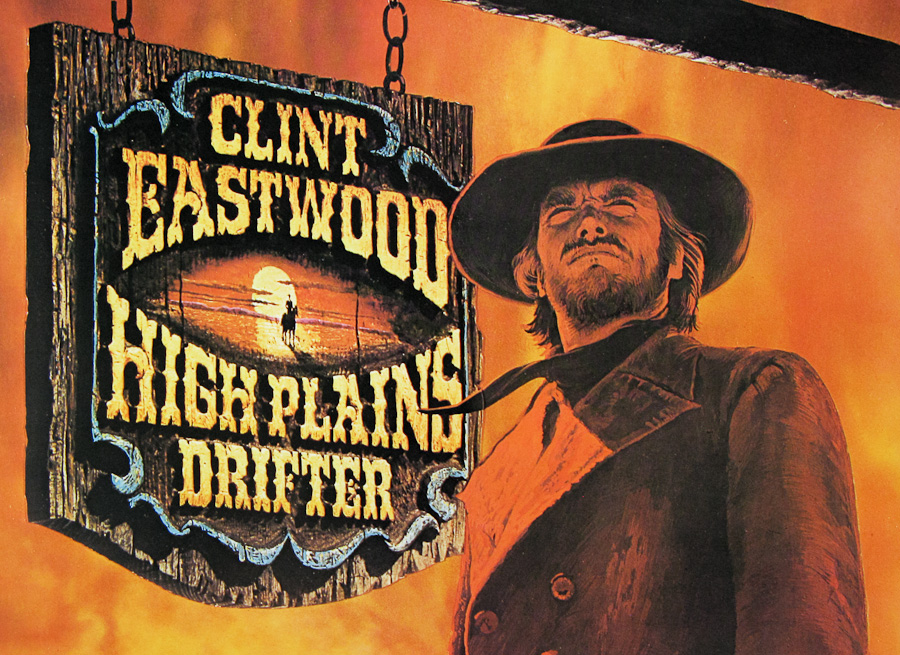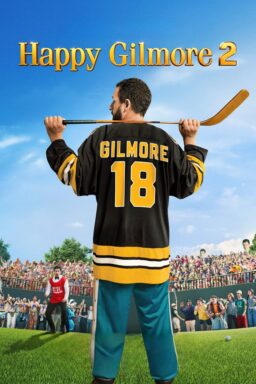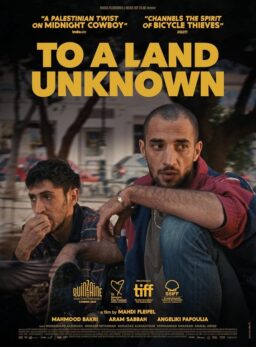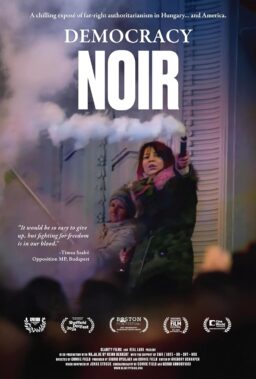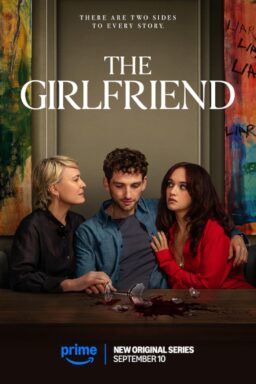Greetings, home theater mavens and other entertainment enthusiasts. I am delighted to be importing the Blu-ray Consumer Guide I began at my blog, Some Came Running, to RogerEbert.com for your delectation and guidance. Before we jump in, a few explanations are in order. I began this Guide in part as a homage to my old editor and now old friend Robert Christgau, whose music CG, started back in the ’60s in Newsday, evaluated albums according to letter grade. At the time and even after, many folks, in particular artists, found this kind of infuriating (see Lou Reed’s posthumously famous [because only five people actually bought/listened to “Take No Prisoners” at the time] putdown of Bob and his system: “Can you imagine working your ass off for a f**king year, and you get a B+ from some a*****e in the Village Voice?”), but since it was adopted by Entertainment Weekly in the mid-eighties it’s become something of a norm. Here’s my breakdown of how letter grades work in my Blu-ray world:
A+ The disc is a must-own, part of any cinephile’s Blu-ray library.
A Pretty much the same as an A+, albeit perhaps lacking some crucial component to kick it into the absolute “must” realm.
A- The disc is an excellently put-together version of a movie that may lean heavily into a specialty realm.
B+ The disc is one worth owning if you’re super-invested in a particular aspect of its creative team (director, actor, etc.)
B The disc is an item that’ll show you a good time on movie night, or partially satisfy a yen among cultists/completists.
B- The disc could be a great movie that got a “close but no cigar” treatment, or a so-so movie that got a great treatment; I’ll hopefully make that distinction in the body of the capsule review.
The various permutations of C and D will be relative to how far the disc falls in the ultra-pertinent categories of picture and sound quality. I tend not to shave off notches on account of lack of extras, believing that the Prime Directive of all Blu-rays is to offer a great iteration of the movie itself. On the rare occasion that a particular supplement actively stinks up the room, that will be noted and have an effect on the rating. And, like many of the graders now among us, I too believe that a D- is more damning than an F. However, these cases crop up but rarely. As far as the actual capsules are concerned, I try to provide a brief window into my view of the actual film before getting into how its presentation on Blu-ray comes across. But I don’t believe that a movie’s video iteration calls for a “re-review” as such, so I try not to impose that on the material I’m writing about. Of course in some cases the movie is so obscure that more may or may not be called for. (See, for instance, this month’s first title.)
Another thing you should know about my method is that, while I do make an effort to stay up to date, my Consumer Guides are not too meticulously keyed toward brand-new releases. I try to stay reasonably current, but I also tend to pay more mind to whim, and a sense of the titles people are interested in reading about, or some combination of the two, when determining what to review from month to month. I take in a mix of domestic and foreign-region titles but for obvious reasons try to favor the latter, ratio-wise. With all that in mind, let’s go. Hope you enjoy, and discover some cool stuff as well.
“An American Hippie In Israel” (Grindhouse)

This 1972 oddity, which I suspect got its current title some time after a particular John Landis picture became popular (its original title is “The Hitchhiker”) gets what’s become increasingly common in the trash cinema Blu-ray racket, e.g., the main disc of the limited edition multi-disc set is a spectacular high-def transfer of a pretty raw, if not crappy-looking, low budget movie. So if you like the texture of a fast 35 (or is it Super 16?) stock, pushed in documentary style, this is one movie you’ll want for the grain and pasty color alone. As for the content, yes, it’s as goofy as you think, and entertainingly so, but that’s part of its problem: It is exactly and only as goofy as you think. It never reaches the jaw-dropping depths of something like, you know, “The Room.” Then again, you can’t NOT laugh when the title character says of the machine-gun toting guys in mime makeup, “I know these creeps, they’re after me!” As with “Grand Illusion” in “Annie Hall,” I suspect it’s “a great movie if you’re high.” —B
“Autumn Sonata” (Criterion)
This is one of Ingmar Bergman’s most controversial pictures—noted Bergman-loving critic Robin Wood absolutely despises it, and star Ingrid Bergman was not shy about what a lousy time she had with the director. In a very specific way it was dangerously brilliant for director Bergman to cast actress Bergman in a role so far outside her comfort zone; it wound up making for a magnificently anxious performance. This utterly ruthless and brisk mother-daughter portrait, with Liv Ullmann very tightly wound indeed as the daughter, is extraordinary if nothing else. This version of the 1978 picture has very saturated colors, a much thicker look than the normally pellucid cinematographer Sven Nykvist customarily went for. Lots of zooms too: not as many as in a Mario Bava picture, but close. Not inapt, as this turns out to be a horror film after all. An extraordinary complement of extras, including a no-holds-barred making of documentary twice as long as the movie itself. —A
“The Big Combo” (Olive)

Joseph L. Lewis’s high-voltage 1955 gangster-noir picture offers the extremely unusual spectacle of Lee Van Cleef calling Earl Holliman “honey” (no, really—and he means it that way, too), which ought to be recommendation enough. It’s also perverse in some other ways too, and action-packed. And the often barely-lit cinematography of John Alton is just magnificent in its black-shrouded minimalism. This Olive disc, from a Film Foundation preserved print, is very good looking; some physical damage to the source material is visible, but overall the Blu-ray delivers an excellent sharp image of the sort I’d deem “repertory quality.” —B+
“The Brood” (Second Sight, Region B locked U.K. import)
David Cronenberg’s ultra-personal answer film to “Kramer vs. Kramer” (no, really!)—in which damaged wife Samantha Eggar, with the help of psych guru Oliver Reed, turns her anger into tiny ski-suit-clad beings who kill everyone who ticks her off (“Husband Art Hindle is understandably upset,” notes the dry synopsis in Michael Weldon’s indispensable “Psychotronic Encyclopedia of Film”)—gets a super-nice treatment from a real up-and-comer of specialty labels. A good sharp picture with lots of yellow, which is fine because that’s what’s built into the color scheme. The extras are nice, although the moderator of a chat with Hindle and now-grown-up creepy child actress Cindy Hinds is a little aggressively fannish for my taste. The story behind Robert Silverman’s acting career is more harrowing than you want it to be, on the other hand. —A-
“A Boy And His Dog” (Shout! Factory)

You ever do that thing where you hope a movie you remember with fondness, but also recall as being unequivocally crappy-looking, will be transformed into something gorgeously watchable in a new hi-def incarnation? Well…while this new version of a very scrappy, and somewhat objectionable (in a good way!) film doesn’t have an eye-popping boost, the transfer brings out a rangy beauty from its low-budget integrity, and that’s not nothing. The color in particular gets a nice pop. As for the movie itself, it’s hard to actively like unless you are willing to give it some indulgences, but by the same token this 1975 adaptation of a perverse Harlan Ellison doomsday tale has to be admired for the courage of its unpleasant conviction. A typically great overall Shout! Presentation of a movie that’s definitely not for everybody. —B+
“City Lights” (Criterion)

Sometimes I wonder whether this isn’t Chaplin’s most perfect film, or his most perfect articulation of what was/is Chaplinesque, or both. This disc will give you oodles of pleasure as you make up your mind. A 4K restoration, in the unusual but entirely proper 1.19 aspect ratio (this is 1931, mind you; Chaplin was not only resistant to sound, but to changes in frame configuration), it has a beautiful (albeit, of course, simulated) nitrate glow, and gorgeous detail. Look at the little kick of light shining off the tramp’s hat in his first scene with the flower girl. The extras array is conscientious and more than solid but here it’s the really just beautiful pictorial aspect that’s the selling point.—A+
“Dracula, Prince of Darkness” (Hammer/Millennium)
Maybe it’s just because this is my least favorite of the Hammer Draculas, but this disc underwhelmed me. After a prologue full of dupey shots from the 1957 “Dracula,” it takes another 50 minutes or so to pick up. Also it’s 1965 so it’s not really that racy. The cheesy contact lenses and speech-impediment-causing fangs on the newly-turned vampire character are pretty entertaining though, as is the spaghetti-sauce-compelled resurrection of the title character. The advertised 2K transfer is not quite a miracle of technology, with DNR giving a lot of the proceeding an undesired pastel look, but much of the time the warm tones of the picture are companionable, I guess. Recalling a day when costar Francis Matthews’ brother filmed the goings-on on set, Christopher Lee grouses on the recorded-in-2003 audio commentary that the fellow “Didn’t ask anyone’s permission.” Christopher Lee: a guy who can really hold a grudge. —B-
“Fantastic Voyage” (Fox)

Ah, good old breathtaking CinemaScope—I can never resist it. To my eye this is a transfer that’s JUST RIGHT. Solid grain structure, colors that meet one’s sci-fi pop art expectations. “Whoo, look at the blue in Donald Pleasance’s eyes!” “Oooh, purple light. Oh, white corpuscles. Antibodies.” That was me watching this. Now of course this 1966 sci-fi potboiler about a buncha scientist who get shrunk to microscopic size to take the ultimate trip through the human body to retrieve some whatzit out of some whozit is circumscribed by its special-effects challenges/limitations, but to me, that becomes the point. The dupeyness is endemic! Murkiness and lighting and optical color effects to camouflage wire work creates a necessary decline in “sharpness” as the movie goes on, and weirdly enough, even the non-effects shots begin to show the strain, and it’s still awesome. (And you can still see the wires.) Faux-trippiness at its most faux and trippy. Also noteworthy is how the movie contrives to have four guys get to second base with Raquel Welch simultaneously. Has to be seen to be believed, as they say. —A-
“God’s Little Acre” (Olive)
Anthony Mann’s 1958 adaptation of Erskine Caldwell’s 1933 chronicle of Deep South lunacy is a weird item that sounds like utter kitsch when merely described (e.g., Buddy Hackett plays a candidate for Sheriff who’s hot for Fay Spain). Mann’s signature sobriety and intensity keep things grounded, even in scenes wherein Michael Landon’s albino romances Tina Louise, the future “movie star” from “Gilligan’s Island.” On the other hand: Aldo Ray! Vic Morrow! A cornpone Robert Ryan smoldering in a parked jalopy as small town brats catcall “Grandpa come on and buy me a drink!” (Ryan was only 50!) After a weak opening credits sequence, the Olive disc picks up and delivers a thoroughly enjoyable presentation of this for-auteurists-only item. —B+
“The Haunting” (Warner)
This 1963 movie looms large in my consciousness for reasons discussed here. It is still, after all these years, a very impressive motion picture, and I’m delighted with the Blu-ray: it’s solid, clean, detailed. Although watching it for the first time in a long time I kinda wonder where its reputation as a more-subtle-than-usual horror film came from, because, its lack of depicted ghosts notwithstanding, this picture goes for funhouse scares in a big unabashed way, lightning-fast cuts and all. Also noticed for the first time how much Humphrey Searle’s score owes to Bartok. —A
“High Plains Drifter” (Universal)

Clint Eastwood’s 1975 oater allegory entertains and intrigues even as one plainly understands the way Eastwood’s directorial reach at the time exceeds his grasp. In this case one can’t hold not knowing his limitations against Clint, for who else would have even wanted to make this odd project? The new Blu-ray is the first halfway decent video version in modern memory, and it’s WAY better than halfway decent; cinematographer Bruce Surtees‘ famous blacks are silky smooth AND intimidating, and never blocky. Some of the detail, for instance special-effects whip-welt makeup, is too telling maybe, but what are you gonna do. An exceptional albeit supplement-short version of a legendary (hell, the Beastie Boys named a jam after it!) film. —A
“I Married A Witch” (Criterion)
This is a movie whose charm is so insistently insouciant that it takes you a while to register, if at all, that its two most delightful characters are murderers, and unrepentant ones at that. Credit Rene Clair for a hilarious end run around the Production Code, with an invaluable assist by Veronica Lake. Most of the time the B&W image here is as scintillating as Ms. Lake herself, but the source itself seems to have a lot of damage, and in certain scenes persistent top-of-frame scratchiness creates an impression that the movie was subject to a wobbly telecine device. Remarkable in many ways, but not an ideal demo disc with which to show off the way high-def and film restoration work miracles. —B+
The James Dean Collection (Warner)
I grew up in the wake of James Dean cultdom, back when a not-quite-first-rate pop song could evoke a particular brand of cool merely by dropping his name. (Am I referring to David Essex’s “Rock On” or The Eagles’ “James Dean?” You decide!) This column hasn’t sufficient space in which to examine the contemporary state of his iconhood, so I won’t. I will instead merely observe that in my philosophy, “East of Eden” is the masterpiece in his sparse filmography, “Giant” a not-terribly distant second, and “Rebel Without A Cause” a never-not-galvanic problem picture. Anyone who’s seen Kent Jones and Martin Scorsese’s “A Letter To Elia” is, if he or she is of his or her right mind, immediately seized by a desire to watch “East Of Eden” right away; the Blu-ray is magnificent, a long-needed upgrade and just gorgeous. In Cinemascope AND WarnerColor, say the opening credits, and both look fabulous. In the opening scene you can see the texture in Dean’s cream-colored sweater, even in long shots. The grain structure is solid, and the slight sepia overcast in much of the film gives it a remarkable added value. “Rebel,” also in Scope and WC, is bright, vivid, vibrant. The flesh tones are flush but the environments framing them remain solid throughout. As for “Giant,” you may well have heard by now about how this complicatedly constructed film is lacking in good original elements, and the dupeyness and the softness inherent in many of the films scenes and individual shots presented the restorers/DVD producers with what Robert A. Harris calls a “nothing to be done” scenario. What the caveat emptor folks on this title don’t acknowledge is that the movie, one of the greatest of near-great films, is a great pleasure to watch for much of the time. See about thirty-eight minutes in, the shots of Liz Taylor’s character reacting to a branding. Film imagery simply does not get more beautiful. The box set has a mind-boggling array of extras. It’s arguably long-overdue. Almost certainly worth the wait. —A
“Jane Eyre” (Twilight Time)

Between “I Married A Witch,” “Giant,” and this title, this seems a month in which miracles are in short supply. This is not a bad-looking disc but frankly the overall impression I gleaned, particularly in the early scenes, was of laserdisc quality rather than Blu-ray. The persistence of a particular manifestation of grain, very active even in scenes enveloped in black, suggests a high-def master from a not-great source. Of course this 1943 adaptation of the Bronte stalwart has some fascinating attractions: Orson Welles, hefty and in frankly odd makeup, is a bizarrely hammy Rochester; young Elizabeth Taylor is remarkably affecting; Agnes Moorehead is Agnes Moorehead; and yeah there’s more than one scene here that seems to bear Welles’ directorial signature. Joan Fontaine fans will also want. —B
“My Favorite Spy” (Olive)
A slightly better than “blah” version of a Bob Hope vehicle made in 1951, when his comic persona was beginning to run out of steam. (Frank Tashlin would come along to give it a nice hysterical-meta kick in the pants with “Son of Paleface” a year later.) I’m a Hope nut so I’m biased, but even I have to admit that his leading lady here, Hedy Lamarr, while Hedy Lamarr and all, isn’t exactly comedy dynamite. Amusing: Hope’s yellow-bellied hack comic, hired by the Feds to impersonate a suave spy, telling President Truman (over the phone), “You can count on me, sir. I’ve never been to Missouri.” The picture is slightly soft but highly watchable. —B-
“La Notte” (Criterion)

Antonioni is one of those filmmakers whose work is up for reassessment about every twenty minutes. There’s so much to what he did, even in the ways that what he did fell short (the nightclub scene in this 1961 film is a real misstep, as Monica Vitti’s quasi-blackface bit in the subsequent “L’Eclisse” would mar that picture) that getting his films in editions that represent them in the best possible way for obsessive re-viewing is, for this reporter, something Western Culture itself needs to make a priority. This new Criterion edition fits the bill. (As does the U.K. Masters of Cinema edition, I have to say, although as the domestic version is the domestic version, it’s the one that gets the nod for your delectation here. Domestically.) Buy!—A+
“The Other” (Twilight Time)
Twilight Time hits pay dirt here, with a gorgeous transfer of a 1972 film that’s ripe for serious reassessment. Based on a novel by Tom Tryon, directed with remarkable sensitivity by the underrated Robert Mulligan, shot with remarkable acumen by Mulligan’s favored lenser Robert Surtees (father of Bruce Surtees), the master of, as Mulligan once put it, “blacks so thick you could eat them,” this is a period piece with a genuine personal perspective on the period (see also Mulligan’s “Summer of '42.”) Also, it’s an evil-twin horror movie that’s creepy as hell. Mulligan cast actual boy twins Chris and Martin Udvarnoky as nice Niles and nasty Holland, then made a point of never depicting them in the same frame, a trick David Fincher would later sort of invert with single person Armie Hammer in “The Social Network.” Hmmm. —A-
“Prince of Darkness” (Scream Factory)
This 1987 green-pulsating-terror-in-a-church tale is not often cited as first-rank John Carpenter but after not having seen it since its release I’ve gotta say it’s nothing to sneeze at either. True, Jameson Parker’s moustache is highly unfortunate, but the claustrophobic scenario is like something out of Argento without the psychosexual frisson, and the Hawksian community vibe Carpenter builds as the science-versus-faith guys tough it out for a night in the Lovecraft-horror-thingie-possessed church takes a pretty tough pounding, as do most of the characters themselves. In the end it’s a silly but tidy and effective shock-delivery mechanism distinguished by always cogent, often inspired widescreen imagery. Good extras too. A real gift for Carpenter people. Aren’t you one? —B+
“Two Men In Manhattan” (Cohen)

Jean-Pierre Melvillle’s 1959 one-time-rarity bristles with the excitement the French master most assuredly felt while shooting on the island he must have considered the Noir Capital Of The World. The director himself acts in the film, playing a world-weary, waterfront-covering French reporter in New York, enlisting a degenerate drunkard colleague to track a disappeared diplomat. The movie has an amazing look to it, and the NYC locations are marvelous, including what looks like a really messed-up dive, the Riverside Tavern in Brooklyn. There’s booze, half-naked-women, and a very low number of broad-daylight scenes, and those are suffused with strong hangover overtones. So what’s not to like, especially as the disc itself captures the film’s dark mood so beautifully, and has some nifty extras too, including a half-hour chat between critics Jonathan Rosenbaum and Ignatiy Vishnavetsky? Well, the movie itself is kinda slack, as if Melville’s excitement at making a movie here somehow inhibited him from contriving a great one. So don’t think “rediscovered classic” but rather “quirky near-anomaly” and you’ll enjoy yourself with this a bit more. —B

